Ultraman ’66
Wow does this story start a while ago! 1966 to be exact. While the Batman craze was in full swing here, Japan was going wild about something else – Ultraman. The Ultraman franchise began with a few trial episodes under the title “Ultra Q” then quickly shifted to the Ultraman franchise of today. According to Wikipedia the Ultraman brand generated $7.4 billion in merchandising revenue from 1966 to 1987, equivalent to more than $18 billion adjusted for inflation. The Wiki entry goes on to say “Ultraman was the world’s third top-selling licensed character in the 1980s, largely due to his popularity in Asia. References to Ultraman are abundant in Japanese pop culture, much like references to Superman in U.S. culture.” Bottom line is that Ultraman is likely one of the biggest superhero franchises in history that you’ve never heard of. I was intrigued when in mid 2021 Spooky announced the game (alongside Halloween), but like many others was unaware of the scale and magnitude of Ultraman worldwide. Reader, you know by now that my “unaware” was about to change. Time to go deep.

I started my recent Ultraman journey where most of the kids did when it came out in the late 60’s. I watched the shows. I purchased a total of 7 Ultraman boxed sets in bluray. They can be found on Amazon and they are on the affordable side. The “first series” ran from 1966 to 1967, but the franchise continues to this day with fresh movie releases every few years. I watched all of the episodes from the first year and a few from the later series as well. It’s an interesting show in many ways. For someone in their 50’s, those ways almost never line up with “great entertainment”. It is, however “interesting” entertainment. The creative thought that went into the Kaiju (monsters) and the beautiful costume/rubber suit designs is marvelous. The “over-the-top” acting by the stars of the show and the beautiful land/cityscapes of pre-70’s Japan are something to both chuckle at and appreciate (and sometimes in the same scene). Yes, once in a while I do find myself lost in the story of a good old fashioned monster movie, but the Kaiju battles between Ultraman and the bad guys (monsters) are meant to satisfy a 7 year old and to enjoy them, you’ll need to put your adult brain in a box for a few minutes. Appreciate them for what they are and don’t expect the camp and abundant adult humor that BM66 brings.
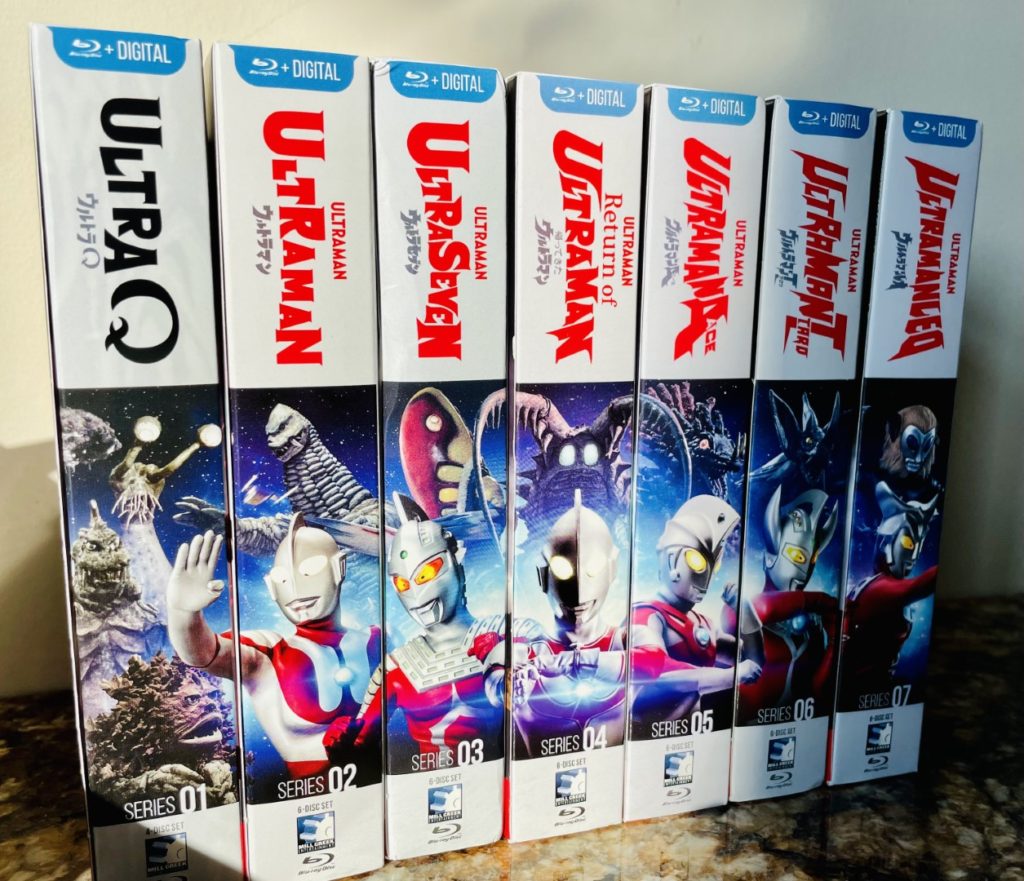
The game is designed and built by Spooky Pinball out of Benton Wisconsin and if you don’t know the Spooky Pinball story, it’s worth discovering for yourself.
The newspaper headline might read “Family starts a small business manufacturing and selling the most complex entertainment device on earth and WINS!”
Buy or rent the movie on Amazon at the link:
https://www.amazon.com/Things-That-Go-Bump-Night/dp/B074MLWZY7
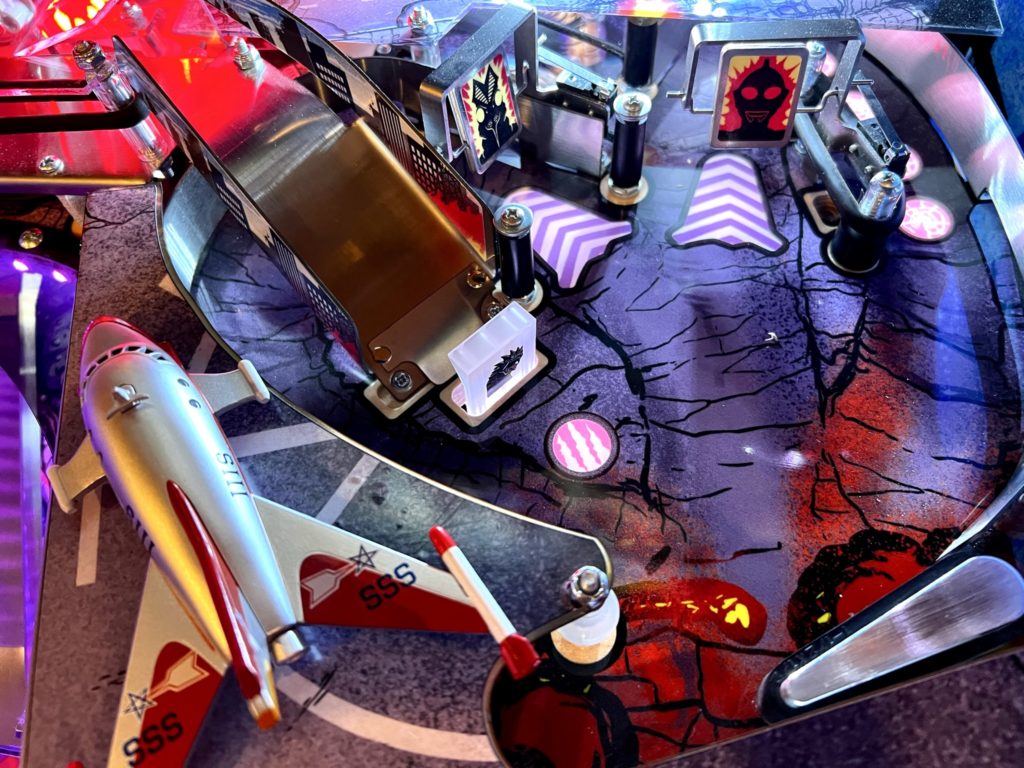
Game Animations: David Fawzma, David Van Es, And Matt Frank
Game Code: David Fawzma
Licensing: Charlie Emery
Artwork: Matt Frank
Rules: Bug Emery and David Fawzma
Engineering: Spooky Luke
Wiring/Nasty Nuts and Bolts: AJ
Custom Music: Matt “Count D” Montgomery
Sculpts: Matt Reister
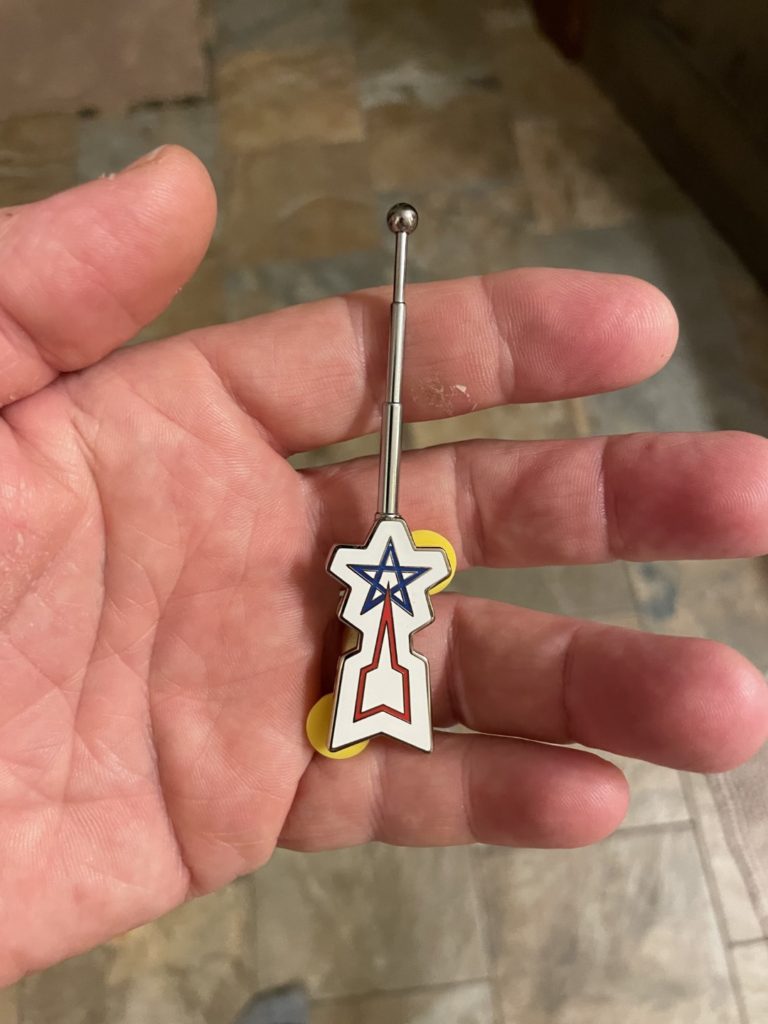
The wait for my Ultraman was long but not painfully so. Spooky does a good job communicating the general timeline and setting expectations so if impatience gets the best of you, it’s your fault not theirs. The wait gave me time to sell a few other games in preparation (Roller Games, Volcano and Space Mission). I was the very first order into Joe at Pinball Star when the game went live for sale. I almost had no choice but to order the game as the “live for sale” date was my birthday. The way Spooky handles orders does not align exactly with how “fast” you placed your order, so I was a bit down the line in production. The Ultraman edition was limited to 500 units total alongside the (released at the same time) Halloween title with the same game design but differing artwork. I received my notice of game assignment (#191 Collectors Edition, hold the butter thank you) on July 24th 2021 and picked up my game at the Dayton freight terminal in Knoxville April 30th 2022. Total time elapsed around 250 days. Not bad for a boutique Pinball company in the middle of a pandemic and short of parts.
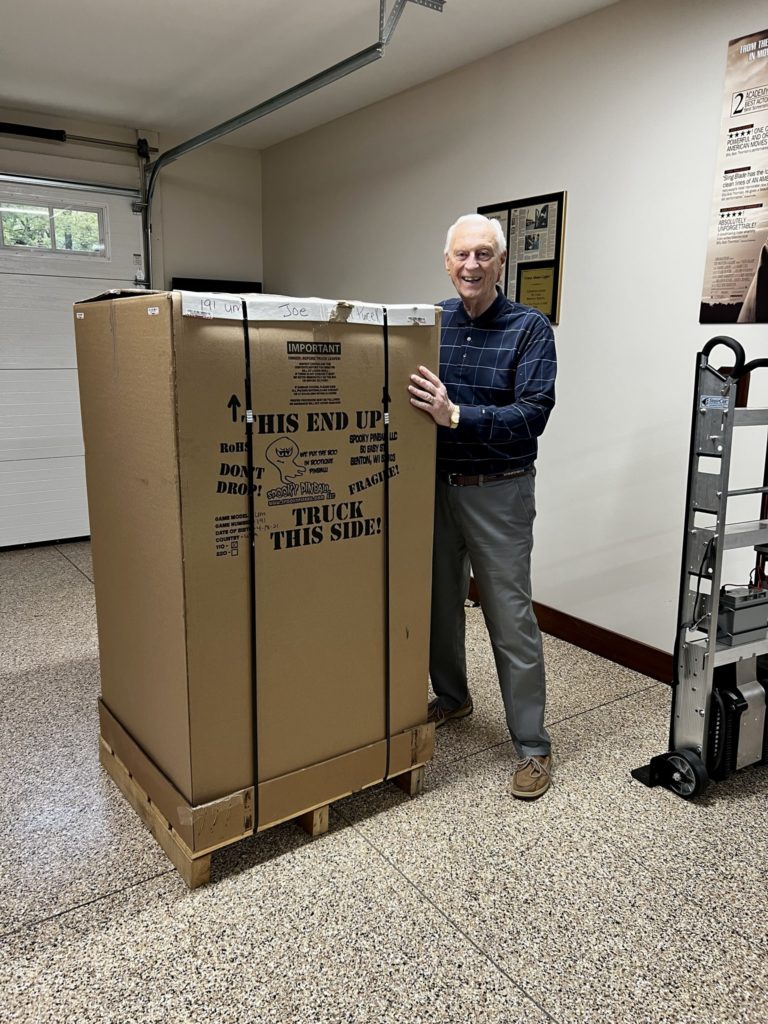
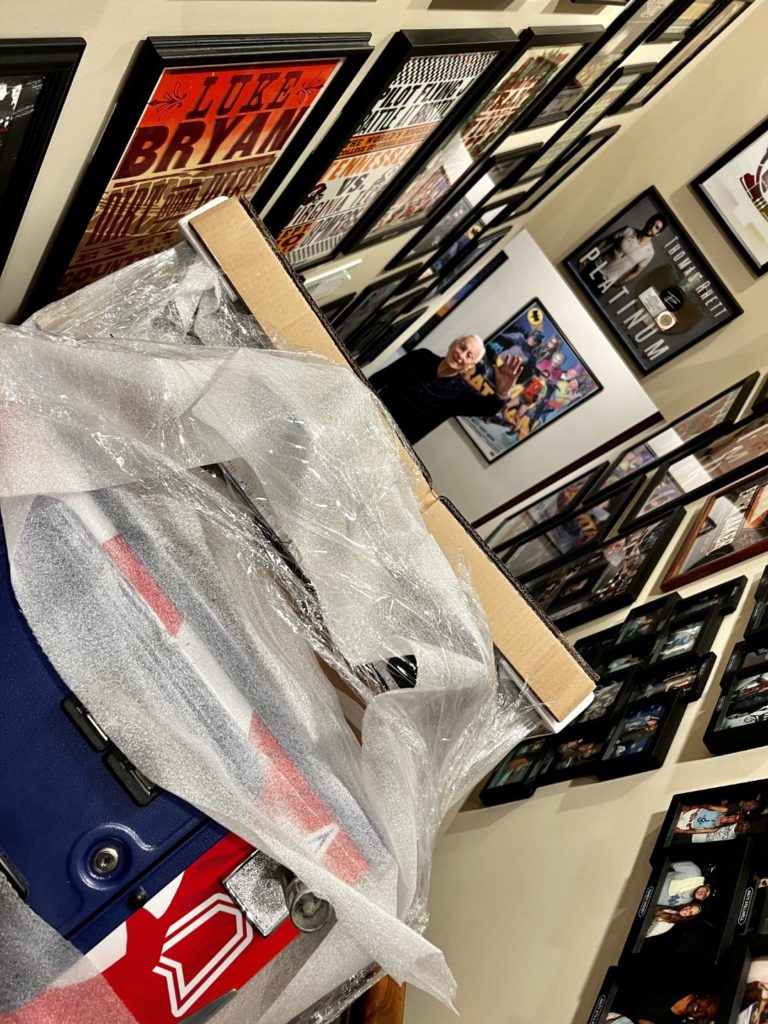
As I waited for my game to be built, I became more and more concerned about what I would receive. The skinny on Pinside from folks that had early games delivered was not good. The negative feedback was broad. First the code. It was almost non-existent. Not the first time I had seen this. I was one of the lucky few to get a BM66 SLE and it came with bare bones code on delivery too. No worries, as code can be added. There was also a pretty wide range of quality issues. Parts not fully screwed down, mechs not working, ball hang-ups in multiple locations, topper problems and more. Many of these issues proved to be minor and Spooky either sorted them for the owners or the owners fixed it themselves. The most nagging of all the feedback was the gameplay. There was talk of it being clunky or without flow. Some went so far as to say it just wasn’t that enjoyable. To be fair, when the code is not fully developed, the gameplay will suffer. I worried most about this type feedback but I also remembered how other games suffered this same negativity, only to emerge later as highly regarded (think Walking Dead, Game of Thrones, Gaurdians of the Galaxy and more). I made the decision to be patient, wait for my game to be delivered and make up my own mind about game play. I’m so glad I did.
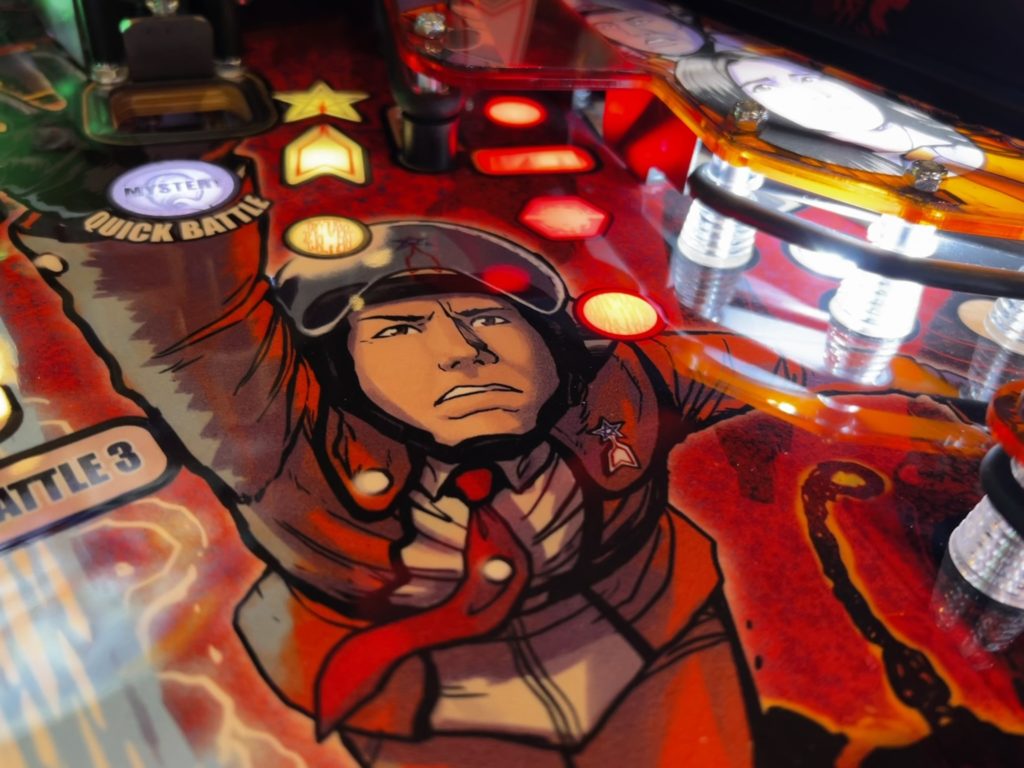
When Joe from Pinball Star gave me the Pro number for the game delivery, I tracked it right away. I was surprised to see it had already been picked up in Benton WI and was on it’s way! It also showed a delivery in just 2 days. I called the moment it arrived at the terminal and asked to come pick it up. The team at Dayton was super helpful and in 15 minutes I had signed for it and loaded it onto the back of the pickup. There was NO chance of rain that day but (in typical game day pickup fashion) of course, on the way home I experienced 10-12 drops on my windshield. The remainder of the trip proved dry and once home, my daughter helped me tip the game off the truck in the garage. Later that evening we had some very dear friends over (Sonny and Carolyn) and he was kind enough to lend me a hand in hauling the game into the Loft and setting it up. Sonny is 87 years young and always ready to learn something new! We used my Escalara to walk it up the steps followed by my homemade pinball setup tool (rocker, RV jack and drill) to get it up in the air and install the legs.
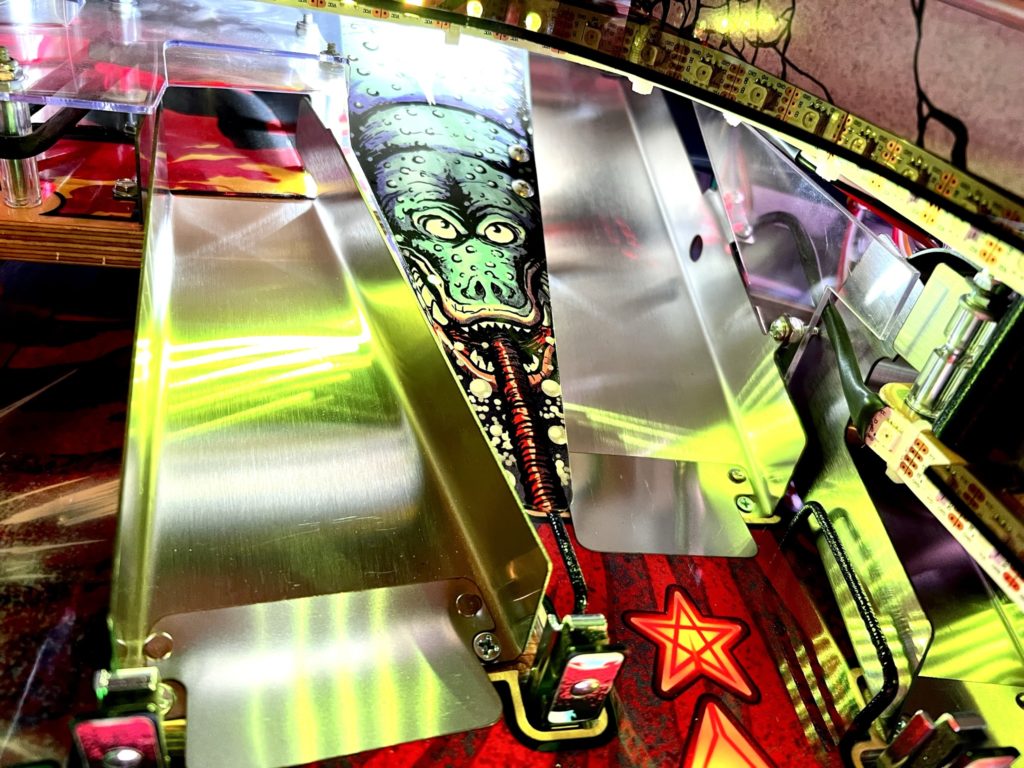
The setup went quickly as I’ve done this a few times 🙂
Once up and plugged in, I asked Sonny to do the honors of powering on the machine. He reached under and rolled the rocker switch and the game came slowly to life. These new machines take a minute … like grab a sandwich minute. Eventually the game fully booted and it was magnificent. Just beautiful. Even in attract mode, the light show was awesome. I hit play. Nothing happened. Well, I take that back. A ball appeared in the shooter lane but the machine was completely silent. No music, no callouts. Time for some troubleshooting. My first stop was behind the backglass but I found only a small circuit board that couldn’t possibly be the sound board. Time to pull the playfield. The PF is very tight in my machine so I used my side blade protectors to ensure I did not scratch the beautiful art blades that came installed from Spooky. Once the playfield was lifted it was easy to find the sound source. Spooky was using a well known Lepai amp to drive the speakers. These are inexpensive but effective class D Chinese amps that pack a lot of output power into a romance novel sized package. I checked all the wiring into and out of the amp – all good. The control knobs were relatively close to the edge of the cabinet so I had to use a small mirror to read them and see what levels they had been set at. I got to the power switch and found the issue. The amp was switched off. With a flick of the finger the largest issue with the game out of the box was fixed. Now to play some pinball!
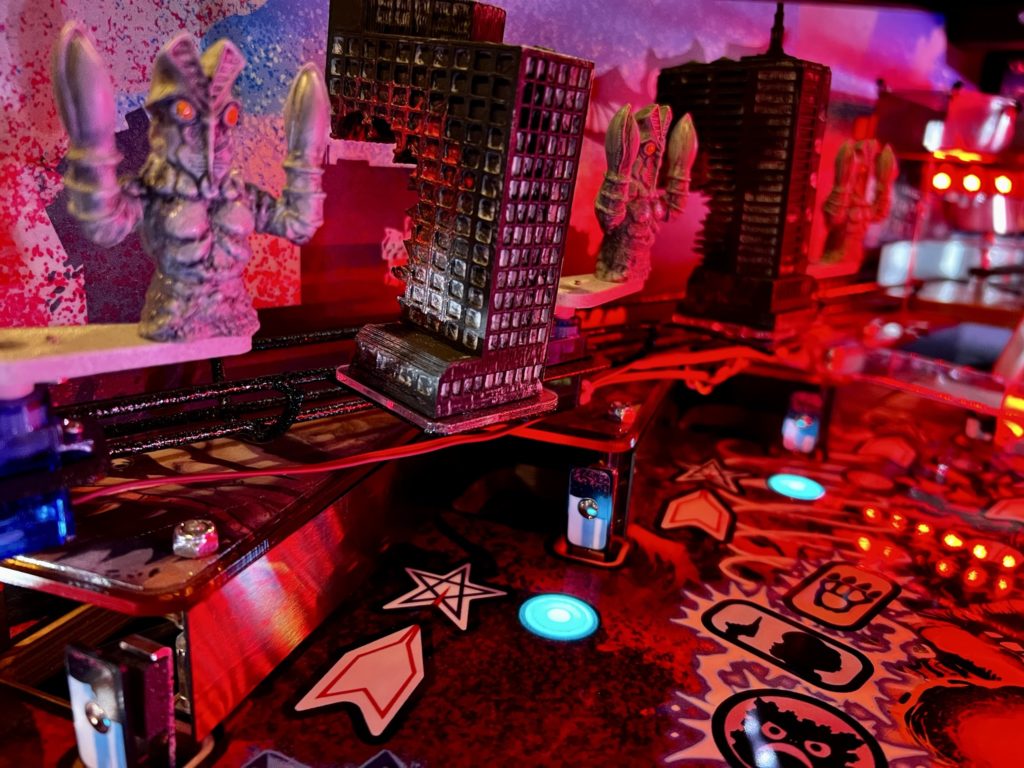
Gameplay. If you’re reading this while the game is still in production, then this is what you came for. If you’ve found this content sometime after that, then I’m hoping it’s confirmation of what you may already know. If you are considering buying an Ultraman on the used market, read on for at least one persons thoughts on the gameplay. Note that as I write this the code is still young/incomplete and the gameplay is likely to both change and improve over time.
Let’s start with the bullet point summary:
- It’s different, and I mean that in the most complimentary way
- It’s a nice combo of both easy and hard things to accomplish
- It’s beautiful – in every single way
- The light show is excellent and fits the theme well
- The theme integration to gameplay is very good
- The left ramp rattles a good bit but rarely rejects, so it “looks” clunky but does not play that way
- The center ramp will reject with a weaker shot and that fact only makes the clean shot feel even more satisfying
- The center ramp can be made with both the right and left flippers
- The right side single drop target/ball lock is a great mech, but needs more supporting code
- The variety of skill shots is something refreshing and a nice selection of risk/reward
- The ability to restart multiball with scoop shot is very “Ballyish” and a welcome bit of code (think Snack Bar in CFTBL)
- The lifters are unlike anything else in pinball and during normal gameplay force a change in your style (not a negative IMO)
- The lifters during multiball are a significant challenge as you don’t have the moving ball on the habitrail/ramp as a visual reference
- The upper playfields are the best I have ever seen and the topmost (Headquarters) is just killer fun
- The outlanes are VERY forgiving and allow you to focus on the center drain and ball control
- The shot variety is excellent and balanced from both the right and left flippers
- The drop targets create nice gameplay variety and future code may enhance further
- The sound quality is there in spades (bass is killer) but needs some leveling and more callouts
- There is plenty of “flow” potential in the game, your skill will determine flow and combos
- The toy sculpts are excellent and close to the best I’ve seen in any game
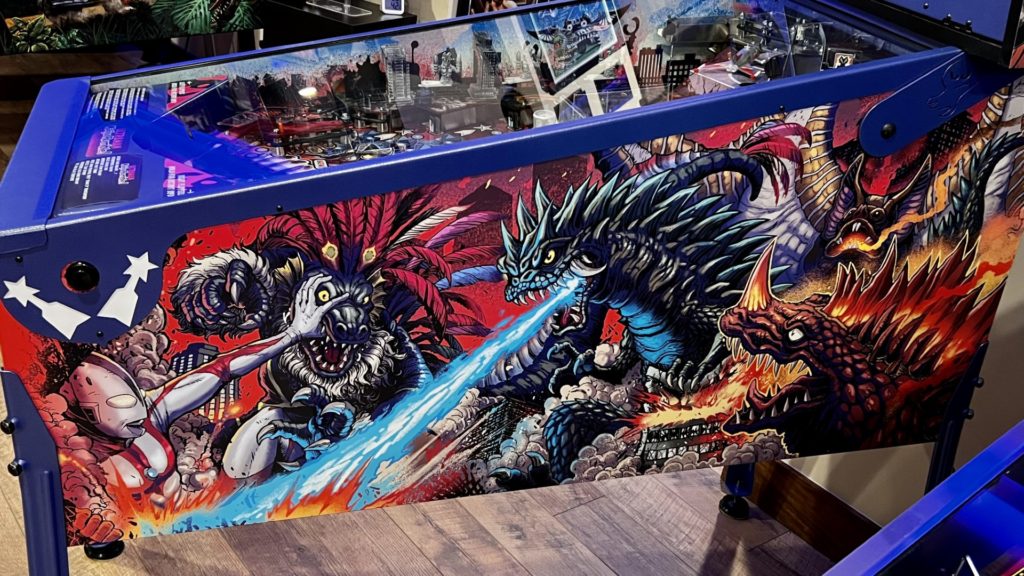
On top of all that the CE “comes with” many extras:
- Laser cut side rails, powder coated and with colored inserts
- Motorized custom topper with RGB lighting
- Pre-installed orange plastic protectors
- Customer blue powder coating INCLUDING backbox and coindoor
- Custom shooter rod
- RGB speaker lights
- Shaker motor and knocker
- Art blades pre-installed
- A signature plaque from Bin Furuya is a very nice touch for all us Kaiju geeks.
- Bin was the actor in the Ultraman suit (uncredited) for the 1966 debut of Ultraman
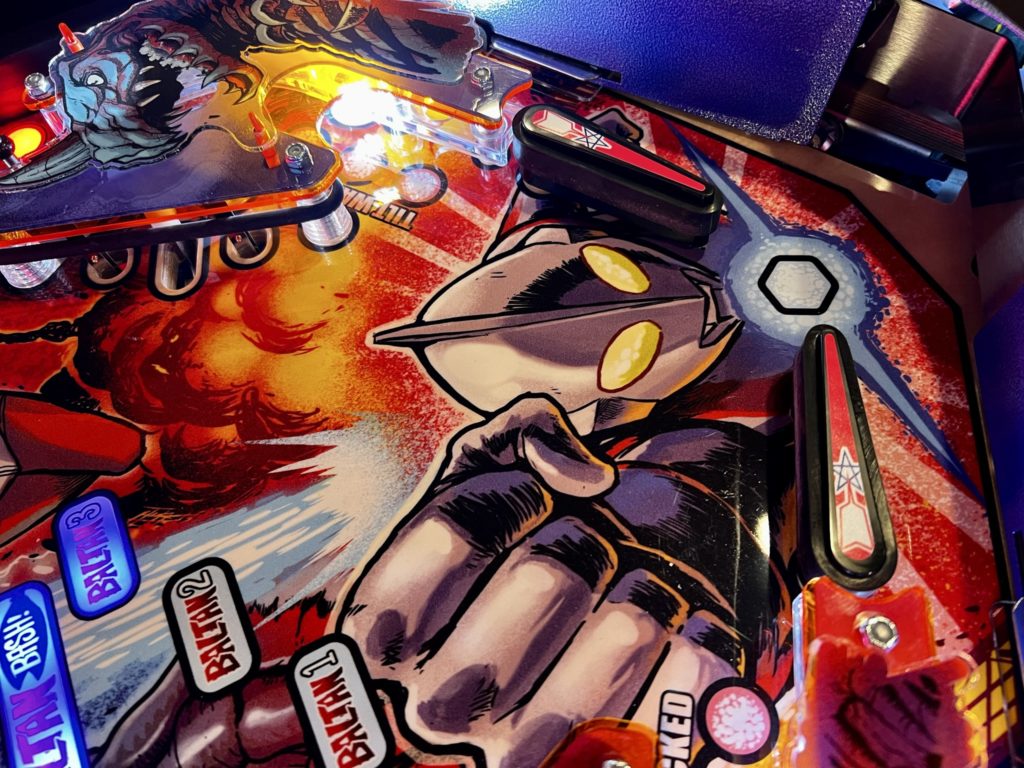
From here, I’ll just give you some stream-of-consiousness commentary of how it feels to play Ultraman. This is not going to be an extensive “review”. After all, I’ve played less than 50 games to date. Like I said earlier, it’s different. So what does “different” mean?? That’s really the $64,000 question. What are the differences and what are we comparing it to? In my mind standard pinball starts with the “fan layout”. A fan layout has ramps that return the ball to an inlane/flipper. What makes Ultraman play different is that those returns to the flippers via ramp or habitrail are missing. They don’t exist. The entire experience of watching a ball roll down that ramp, drop into the inlane and then mentally prepare for the shot are missing. Well EXCEPT for that very last part and BTW, you don’t get a ton of time or line of sight. The “mentally prepare for the shot” time exists for sure, but it is shortened both in time and visbility. Time is cut because the location of the lifter and is just inches from the flipper and visibility is reduced because unlike a ramp/habitrail drop, you only get to “see” the ball for maybe 3 inches of travel total. There – I said it. The largest difference in gameplay for Ultraman is the impact that the lifters have on gameplay. For the most part, I like it. I appreciate the challenge. YMMV
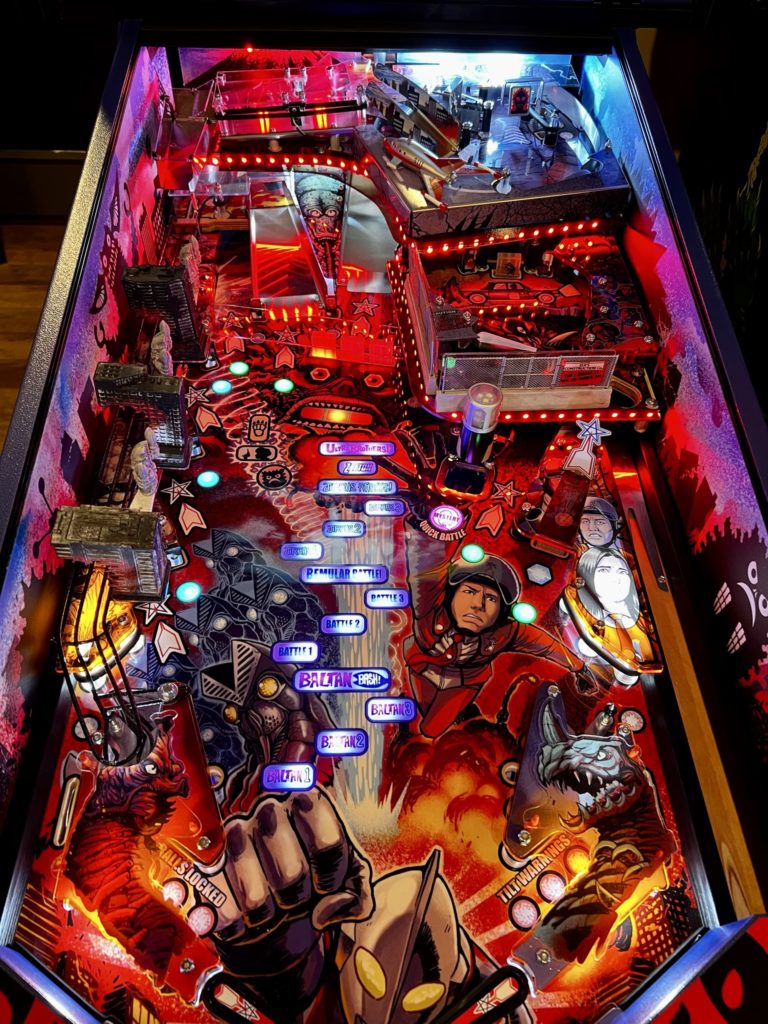
The other difference I’ve experienced is related to the above. The ball can spend a bit of time in the subway system and can move in a surpising number of paths. It’s by design. That can translate to a good portion of the time that the ball is simply not visible or in those moments, not available for gameplay. Given that the game is also at times frenetic and blindingly fast. The “break” presented by subway travel is not a negative. I use this time to plan the next shot and take note of where I am in the game. I’m still surprised by how many places the ball can exit the first upper playfield. All of this can translate at times to a feeling of “losing the ball” or at a minimum wondering where it went. Some of this is the newness of the game and over time, I’ll get to know all of the various ball paths. Even so, the variety of shots and ball paths lead me to add this as part of the overall definition of “different” – again though, I’ll add “in a good way”.
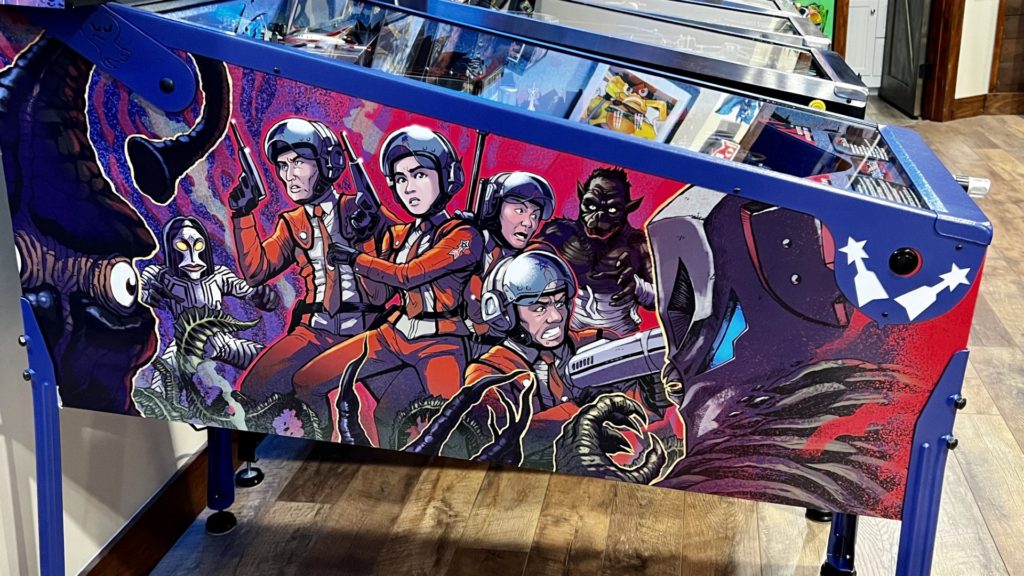
In closing, I would say that the quality and variety of the engineering is something I would also credit as additive to gameplay. This is not a simple, single level game. It’s one of the most complex multi-level games manufactured by anyone, let alone a company with new designers at the healm. I think if you took away some of the (unwarranted) complaints of the lifter mechs and view the remainder of the game as a whole, you’d be impressed at what a young Spooky team has accomplished.

The game has two complete and intensely fun to play upper playfields, both with a drop target and one with dual spinners and a connected a teeter totter ramp! All of this innovation and creativity packed into one game that manages to deliver a satisfying theme integration based a foreign licensed property that most Americans have never heard of. A risky endeavor to be “different”, but with a hugely successful outcome. Congratulations Spooky team, well done.
Shuwatch!

Change wishlist:
- UI screen needs some changes: visibility of score and ball count is terrible to my aging eyes
- The call-outs need to increase in variety and tighten up from a choreography perspective
Minor QC issues on my game when unboxed:
- The center sticker on the apron is installed crooked (no just a little either)
- The right lifter was occasionally sticking “up” (found a loose cable catching the gear and zip tied it out of the way)